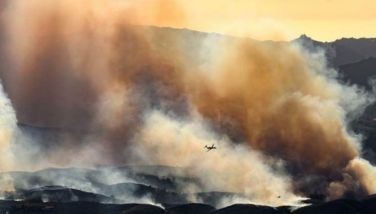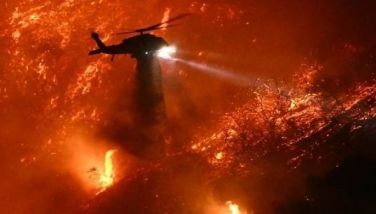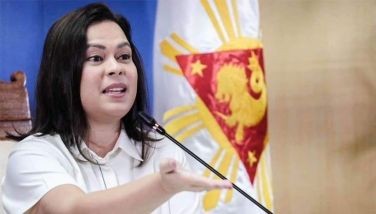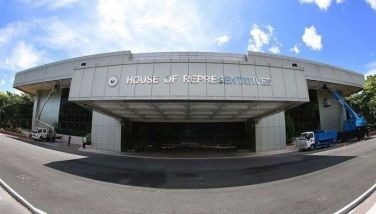Master plan for RP sports/San Beda not thinking sweep
Two days ago, Philippine sports took another leap forward with the holding of the Pre-Sports Summit Organizational Meeting held at Building A of the PhilSports complex in Pasig City. The audiovisual room was filled with officials of the Philippine Olympic Committee, Philippine Sports Commission, National Sports Associations, various government agencies, and members of congress involved with sports. It was a great show of unity and strength in preparation for another landmark summit in December.
Dr. Benjie Espiritu, chairman of the Philippine Olympic Academy, facilitated the meeting, which began by listing the objectives. Much of the spadework that needed to be done was assigning various “volunteers” to form committees to tackle various issues that need to be addressed. One of the first issues raised by POC president Peping Cojuangco is funding, and the need to work together for a fluid, structured flow in a coordinated sports program. He also cited their experience in the recent Youth Olympic Games, and reiterated the need to reinforce the nutrition aspect of athletic training.
It was during President Fidel Ramos’s administration that the first Philippine Sports Summit was held in Baguio City. This writer was appointed head of the NCR delegation, among 800 or so members of the sports community that attended. Over four days with very little sleep, the various committees drafted over three agreements for a Covenant for Philippine Sports. Many of the agreements were largely forgotten in two summits that followed. Many of the delegates who were involved were likewise left out of succeeding planning sessions.
One of the results of the Sports Summit though, were Executive Order 63 which created the national, regional, provincial, city, municipal and barangay physical fitness and sports development councils (PFSDC); one of the programs that President Ramos thought would have a big impact on the overall health of the country. Ramos himself led public exercise programs on the grounds of Malacañang Palace on a pre-determined national fitness day. The second major output was Executive Order 64, which adopted the national policy and program of “Sports for All” by all concerned agencies based on the Sports Covenant forged during the summit. The “Sports for All” initiative eventually faded away.
This time around, the various sectors involved committed to this longer preparation period and a more patient, objective approach to developing sports champions.
“One of the things we must address is what do the athletes really need?” Cojuangco stressed. “At the Youth Olympics, our athletes were met with every kind of food that there is. Any kind of food you could think of was there. But as in our experience, each kind of athlete has a different kind of diet. All that food may not necessarily be appropriate for them.”
Cojuangco, head of the equestrian NSA, also compared that strict standard to how prized steeds are treated. When horses are transported to and from competitions, all their food and water is brought with them so that their diet and hence their performance is also consistent.
The flow of sporting events as it stands is also disjointed, Cojuangco explained. Government programs like the Batang Pinoy and Palarong Pambansa should be part of an overall plan, and should contribute to the identification and eventual selection of athletes for the national pool, instead of just serving as stand-alone showcase events that bear no real fruit.
Meanwhile, the Philippine Sports Commission, through chairman Ritchie Garcia, emphasized that what happened during the past administration should never happen again.
“Sports should never be divided again,” Garcia said.
Garcia also explained that his agency would be selective about events to support, considering the money available, and the emergence of a streamlined, coordinated program.
* * *
The San Beda Red Lions are not thinking of a sweep of the current NCAA seniors basketball competition.
Head coach Frankie Lim told this writer that he still is not looking that far ahead, since they have a relatively difficult schedule ahead.
The last four games of San Beda pit them against Arellano University, Jose Rizal University, Colegio de San Juan de Letran, and San Sebastian College. The last three of those games happen within a span of 10 days. San Beda has not lost in 12 games. San Sebastian (11 wins and one loss), the defending champion, is second. JRU (9-3) is firmly in third, while Mapua is a distant fourth at seven wins and five losses, and still may be forced into a playoff if it drops its remaining games.
“I told my players let us think one game at a time,” Lim said. “We have a tough schedule ahead of us.”
In those 12 wins, the only margin of victory under 10 points was against Mapua in the first round, something the Red Lions rectified by beating the Cardinals in more convincing fashion Wednesday. But San Beda played minus starting point guard Borgie Hermida, who was recovering from a sprained ankle.
- Latest
- Trending
































